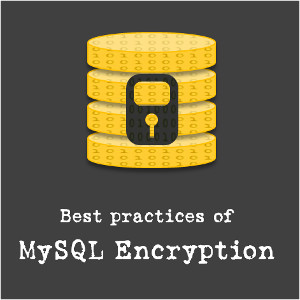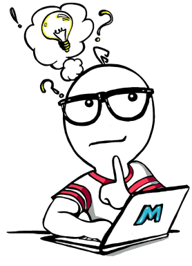Tableau Training and Certification - Tableau 10 Desktop

Intellipaat
Course Summary
Intellipaat Tableau training will help you master building interactive tableau dashboards and learn data visualization. This course with prepare you for Tableau Desktop Qualified Associate Certification exam. In this training you will also learn Tableau desktop and public integration with R & Big data. It is best suited for software developers, BI professionals, system and IT administrators.
-
+
Course Description
This Intellipaat Tableau Certification Training program will get you up to speed on concepts of data visualization with a firm understanding of Tableau Architecture. You will be well-versed in the concepts of Filters, Parameters, Graphs, Maps, Table Calculation and Dashboards. You will gain further expertise in data blending, data aggregation and R Connectivity with Tableau.About Tableau Training and Certification - Tableau 10 Desktop Course
What you will learn in this Tableau Training Course?
- Understand Tableau Desktop Architecture and how to use Tableau in real life
- Tableau statistics and Tableau interactive dashboard
- Master Tableau Reporting, Graphs, Maps, Table Calculation
- Simplify and organize data with data connections
- Master Special Field Types and Tableau Generated Fields
- Learn to implement Data Aggregation and Data Blending in tableau
- Understand R Connectivity with Tableau
- Gain knowledge on using R scripts in Tableau
- Perform real time analytics and Tableau data visualization
- Prepare for Tableau Desktop Qualified Associate Exam
Who should take this Tableau Training Course?
- Data Scientists, Business Intelligence Professionals, Testing Professionals
- Statisticians , Business Analysts ,Project Managers
- Data Visual Analysts Functional Experts
- Graduates and Professionals looking to move to analytics domain
What are the prerequisites for learning Tableau?
- There are no prerequisites for taking up this Tableau certification training course.
Why should you learn Tableau Online Training?
- Global Business Intelligence and Analytics Market to Reach $16.9 Billion in 2016 - Gartner
- Tableau is a leader in the Gartner Magic Quadrant for BI for fourth year - Gartner
- Average Tableau salaries are 77% higher than average for all other salaries. – indeed.com
-
+
Course Syllabus
Tableau Course Content
Introduction to Data Visualization and Power of TableauWhat is data visualization, Comparision and benefits against reading raw numbers, Real usage examples from various business domains, Some quick powerful examples using Tableau without going into the technical details of TableauArchitecture of TableauInstallation of Tableau Desktop, Architecture of Tableau, Interface of Tableau (Layout, Toolbars, Data Pane, Analytics Pane etc), How to start with Tableau, Ways to share and exporting the work done in TableauHands-on Exercise – Play with the tableau desktop, interface to learn its user interface, Share an existing work, Export an existing workWorking with Metadata & Data BlendingConnection to Excels, PDFs and Cubes, Managing Metadata and Extracts, Data Preparation and dealing with NULL values, Data Joins (Inner, Left, Right, Outer) and Union, Cross Database joining, Data BlendingHands-on Exercise – Connect to an excel sheet and import data, Use metadata and extracts, Handle NULL values, Clean up the data before the actual use, Perform various join techniques, Perform data blending from more than one sourcesCreation of setsMarks, Highlighting, Sort and Group, Working with Sets (Creation of sets, Editing sets, IN/OUT, Sets in Hierarchies)Hands-on Exercise – Create and edit sets using Marks, Highlight desired items, Make groups, Applying sorting on result, Make hierachies in the created setWorking with FiltersFilters (Addition and Removal), Filtering continuous dates, dimensions, measures, Interactive FiltersHands-on Exercise – Add Filter on data set by date/dimensions/measures, Use interactive filter to views, Remove some filters to see the resultOrganizing Data and Visual AnalyticsFormatting Data (Labels, Annotations, Tooltips, Edit axes), Formatting Pane (Menu, Settings, Font, Alignment, Copy-Paste), Trend and Reference Lines, Forecasting, k-means Cluster Analysis in TableauHands-on Exercise – Apply labels, annotations, tooltips to graphs, Edit the attributes of axes, Set a reference line, Do k-means cluster analysis on a datasetWorking with MappingCoordinate points, Plotting Longitude and Latitude, Editing Unrecognized Locations, Custom Geocoding, Polygon Maps, WMS: Web Mapping Services, Background Image (Add Image, Plot Points on Image, Generate coordinates from Image)Hands-on Exercise – Plot latitude and longitude on geo map, Edit locations on the map, Create custom geocoding, Use images of a map and plot points on it, find coordinates in the image, Create a polygon map, Use WMSWorking with Calculations & ExpressionsCalculation Syntax and Functions in Tableau, Types of Calculations (Table, String, Logic, Date, Number, Aggregate), LOD Expressions (concept and syntax), Aggregation and Replication with LOD Expressions, Nested LOD ExpressionsWorking with ParametersCreate Parameters, Parameters in Calculations, Using Parameters with Filters, Column Selection Parameters, Chart Selection ParametersHands-on Exercise – Create new parameters to apply on a filter, Pass parameters to filters to selet columns, Pass parameters to filters to select chartsCharts and GraphsDual Axes Graphs, Histogram (Single and Dual Axes), Box Plot, Pareto Chart, Motion Chart, Funnel Chart, Waterfall Chart, Tree Map, Heat Map, Market Basket analysisHands-on Exercise – Plot a histogram, heat map, tree map, funnel chart and others using the same data set, Do market basket analysis on a given datasetDashboards and StoriesBuild and Format a Dashboard (Size, Views, Objects, Legends and Filters), Best Practices for Creative and Interactive Dashboards using Actions, Create Stories (Intro of Story Points, Creating and Updating Story Points, Adding Visuals in Stories, Annotations with Description)Hands-on Exercise – Create a dashboard view, Include objects, legends and filters, Make the dashboard interactive, Create and edit a story with visual effects, annotation, descriptionIntegration of Tableau with R and HadoopIntroduction to R Language, Applications and Use Cases of R, Deploying R on Tableau Platform, Learning R functions in Tableau, Integration with HadoopHands-on Exercise – Deploy R on tableau, Create a line graph using R interface, Connect tableau with Hadoop and extract dataTableau ProjectsProject 1 – Tableau Interactive DashboardData Set – SalesObjective – This project is involved with working on a Tableau dashboard for sales data. You will gain in-depth experience in working with dashboard objects, learn about visualizing data, highlight action, and dashboard shortcuts. With a few clicks you will be able to combine multiple data sources, add filters and drill down specific information. You will be proficient in creating real time visualizations that are interactive within minutes.Upon completion of this project you will understand how to create a single point of access for all your sales data, ways of dissecting and analyzing sales from multiple angles, coming up with a sales strategy for improved business revenues.Project 2Domain – Crime Statistics (Public Domain)Objective –The Project aims to show the types of crimes and their frequency that happen in the District of Columbia. Also to provide the details of the crimes like, the area/location and day of the week the crime has happenedProblem statement :Police departments are often called upon to put more “feet on the street†to prevent crime and keep order. But with limited resources, it’s impossible to be everywhere at once. This visualization shows where crimes take place by type and which day of the week. This kind of information gives local police more guidance on where they should deploy their crime prevention efforts.- Map should be plotted at Block site address level
- Show the Offense, Location and Date of Crime occurrence.
- Show the Number of incidents and frequency in percentage for each type of crime happened(Offense)
- Show each incident happened every month by week and weekday and by offense type
- The dashboard should have Crime type and District filters which will be applicable to all three sheets in the dashboard
- An action from Map should filter out the other two sheets accordingly
- An action from tree map and bar chart should highlight the remaining two sheets according to the selection
Project 3Domain – HealthcareObjective –Visual Mapping between Vaccination rate and Measles outbreakProblem statement :- Plot measles outbreaks depending on the coverage of population
- Plot measles infection cases before 1st dose, between 1st and 2nd dose and after the 2nd dose of measles vaccination
- Plot the correlation between immunity when vaccination coverage is high within schools
- Plot correlation between poor urban areas which were not vaccinated at high rate and other areas which were vaccinated properly
This course is listed under
Development & Implementations
, Data & Information Management
and Networks & IT Infrastructure
Community
Related Posts:





